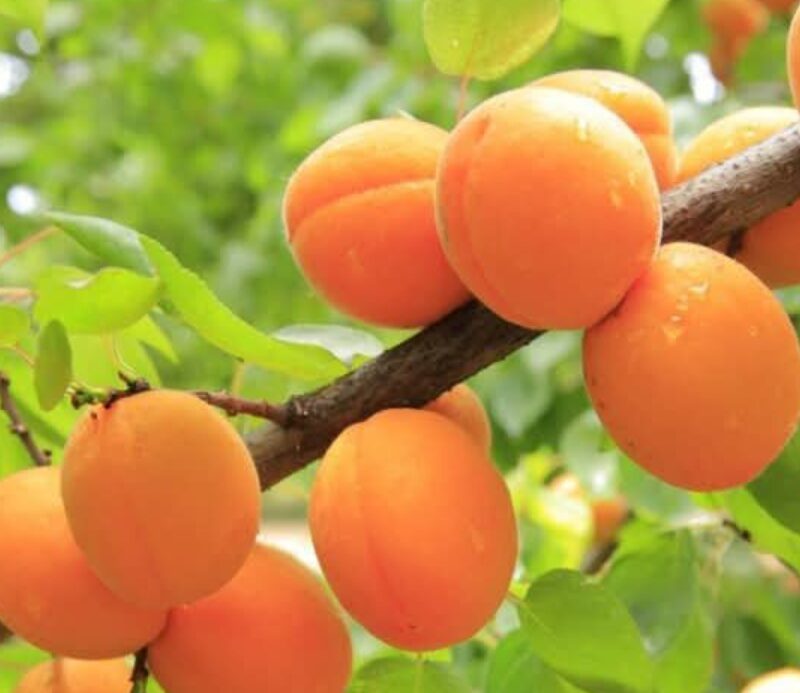Pruning apricot trees is essential for ensuring healthy growth, higher fruit production, and disease prevention. Many gardeners hesitate to prune their apricot trees, fearing they might damage the tree or reduce fruit yield. However, proper annual pruning leads to better tree structure, improved airflow, and stronger fruit-bearing branches.
In this detailed spring pruning guide, you’ll learn:
✅ Why apricot trees need regular pruning
✅ The best time to prune for maximum fruit yield
✅ Step-by-step pruning techniques (formative, rejuvenation, and sanitary)
✅ Common mistakes to avoid
✅ How to shape apricot trees for long-term productivity
By the end of this guide, you’ll be able to prune your apricot tree with confidence and set it up for years of fruitful harvests! 🍑
—
🌱 Why Prune Apricot Trees?
Unlike other fruit trees, apricots bear fruit on young wood, meaning neglecting pruning can reduce fruit production over time. Proper pruning ensures:
✔ Increased fruit production – Encourages strong fruit-bearing branches.
✔ Better air circulation – Reduces fungal diseases like moniliosis (brown rot).
✔ Stronger tree structure – Prevents branch breakage under fruit weight.
✔ Easier harvesting – Keeps trees manageable and accessible.
🌸 Spring pruning is crucial for encouraging new growth and preventing disease in apricots!
—
🗓 When to Prune Apricot Trees?
✅ Best Time: Early Spring (Late February – April)
Before buds start breaking (before the sap starts flowing).
Helps the tree focus energy on new growth instead of damaged branches.
❌ Avoid Pruning in Late Summer & Fall
Pruning after July can stimulate late-season growth, making the tree vulnerable to winter damage.
Late cuts expose trees to fungal diseases like moniliosis.
—
🛠 Essential Tools for Pruning
✔ Hand Pruning Shears – For small branches (under ½ inch thick).
✔ Loppers – For medium branches (½ – 1½ inches).
✔ Pruning Saw – For thicker branches (1½ inches or more).
✔ Gloves & Safety Glasses – Protect hands and eyes from debris.
✔ Tree Wound Sealant – Prevents infections on larger cuts.
✔ Disinfectant Spray – Use alcohol or bleach solution to clean tools between cuts (prevents disease spread).
—
✂️ Step-by-Step Guide to Pruning Apricot Trees in Spring
1️⃣ Sanitary Pruning: Removing Dead & Diseased Branches
Inspect the tree and remove dead, broken, or diseased branches.
Look for dark, sunken areas (signs of black canker or fungal infections).
Remove branches damaged by bark beetles or cytospora fungus.
🔎 Pro Tip: Always cut back to a healthy bud or branch collar for clean healing.
—
2️⃣ Formative Pruning: Shaping the Tree for Optimal Growth
Apricot trees require proper shaping to ensure even sunlight distribution and strong branching. The sparse-layered method is most effective.
Year 1 (First Spring) – Establish the First Tier
Cut the seedling’s central trunk to 40-50 cm (16-20 inches).
Select 4 strong, evenly spaced branches for the first tier.
Remove any weak or downward-growing shoots.
Year 2 – Develop the Second Tier
Remove all except 4 scaffold branches at 70-100 cm (28-40 inches) above the first tier.
Ensure at least 10-15 cm (4-6 inches) between branches for airflow.
Shorten all primary scaffold branches to match the weakest one.
Year 3 – Third Tier & Leader Cutback
Select two new scaffold branches above the second tier, maintaining spacing.
Trim back the central leader to encourage a balanced structure.
Year 4-5 – Refinement & Maintenance
Remove vigorous inward-growing shoots.
Thin out excess growth to allow light into lower branches.
Keep the central leader at least 15 cm (6 inches) taller than surrounding branches.
🌳 Goal: A strong, open structure that allows light and airflow, promoting healthy fruit development.
—
3️⃣ Rejuvenation Pruning: Restoring Old or Neglected Apricot Trees
If your apricot tree has overgrown, weak fruiting, or excessive branches, it may need rejuvenation pruning.
✅ When to Rejuvenate: If annual branch growth is less than 20 cm (8 inches).
✅ How to Prune:
Reduce crown height by 1-1.5 meters (3-5 feet).
Shorten skeletal branches to promote new shoots.
Remove crowded branches to stimulate fresh growth.
—
🚫 Common Pruning Mistakes & How to Avoid Them
❌ Over-Pruning – Never remove more than 25% of the tree at once.
❌ Cutting Too Close to the Trunk – Always leave the branch collar intact for proper healing.
❌ Topping the Tree – Weakens tree structure, causing unbalanced regrowth.
❌ Leaving Stubs – Attracts diseases and pests.
👉 Pro Tip: Always step back and evaluate the tree’s shape before making cuts!
—
🦠 How to Prevent Disease After Pruning
🌿 Apricot trees are prone to fungal infections, so take extra precautions:
✔ Prune only on dry days – Moist conditions increase disease risk.
✔ Apply tree wound sealant to cuts larger than 2 cm (1 inch).
✔ Sterilize tools after each cut to prevent infection spread.
—
🌸 Final Tips for a Healthier Apricot Tree
✔ Prune annually to maintain tree shape and productivity.
✔ Encourage fruiting wood by removing excessive vertical growth.
✔ Water and fertilize regularly to support post-pruning recovery.
✔ Thin fruit clusters after pruning to prevent branch breakage.
🌳 With proper pruning, your apricot tree will produce delicious fruit year after year! 🍑
—
📌 Summary: The Key to Successful Apricot Tree Pruning
✅ Best Time: Early Spring (Late February – April)
✅ Pruning Methods:
🔹 Sanitary Pruning – Remove dead/diseased branches
🔹 Formative Pruning – Shape the tree in early years
🔹 Rejuvenation Pruning – Restore old trees
✅ Best Shape: Sparse-layered crown for airflow and light
✅ Avoid: Over-pruning, cutting in fall, and leaving stubs
✅ Use: Sterile tools & wound sealant to prevent infections
👉 Now you’re ready to prune your apricot tree like a pro! ✂️🌳
Did you find this guide helpful? SHARE it with fellow gardeners!
How to prune apricot trees in spring
Best time to prune apricot trees
Step-by-step guide to pruning fruit trees
Pruning techniques for apricots
How to shape apricot trees for better fruit yield






